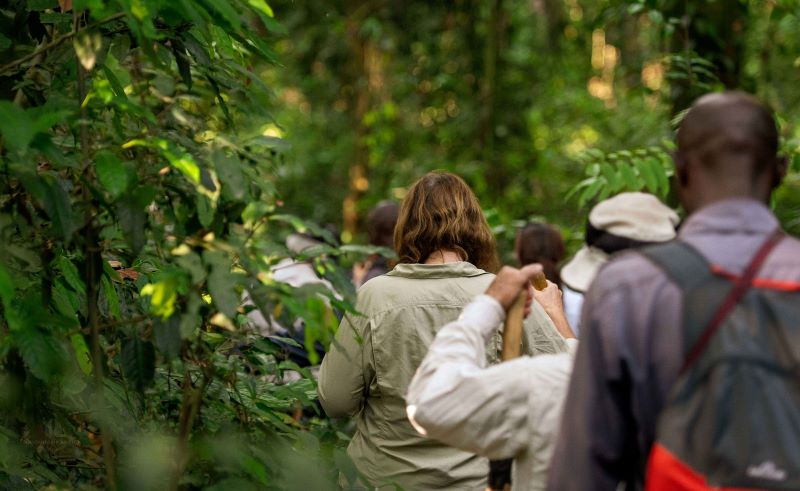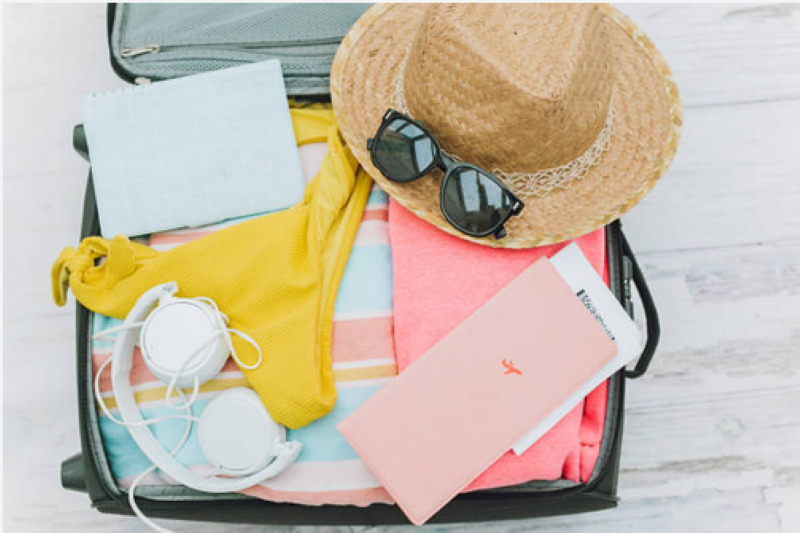What to pack for a Safari in Uganda? Here is our Safari packing list for Uganda, with best recommendations to enjoy your stay on safari.
Remember the climate conditions for a Safari in Uganda
On gorilla safaris, it can rain at any time of the year due to the tropical environment. However, most days also include times when the clouds part and the sun appears. The nights can be very cold in the mountainous regions, which are significantly colder than the lower elevations.
With temperatures reaching 34°C or more, January and February are often the warmest and driest months of the year. Though there is always a potential of rain). This is particularly true in the lower lying regions where boat tours, animal drives, and other activities are conducted. Even while it is hot throughout the day in lower lying places. The nights at higher altitudes during gorilla treks are much colder.
Clothes – Jeans or not ?
Many people believe that wearing jeans while traveling in Africa is not a good choice because they are heavy, uncomfortable, and take a long time to dry. However, a pair of jeans have some pro arguments like the comfort, durability, and ability to conceal the dust and dirt that tends to collect on public transportation.
Light cotton pants for your Uganda Safari trip are a wonderful substitute because they weigh less and dry faster. Light colors should be avoided as they are more likely to reveal dirt.
Rather than packing an additional pair of pants if you want to spend some time in the mountains, consider packing a pair of safari pants made of a synthetic material that is UV protected, convertible, and vented for comfort. When in the bush, the cloth works wonders against dampness and dust.
These kinds of pants are very useful if you’re going gorilla trekking because the rainforest is very humid and has a lot of low-lying plants where protection is essential.
Men can wear shorts when traveling, particularly in casual settings and on the plains of the savanna. Many Ugandans, on the other hand, believe that they are unsuitable for mature men whose school days are obviously behind them. It’s important to think about whether you’ll be able to change into longer pants before mosquitoes start biting at your ankles before traveling in shorts.
Skirts for the Ladies
for a Safari in Uganda ?
Similar to pants, the ideal material for these is a light, natural fabric like cotton. For formal purposes, it is best to wear skirts that fall below the knee; many Ugandans, especially Muslims, will take offense with short skirts. They might be seen as provocative in some circles, whether you like it or not.
While wearing pants or jeans instead of a skirt is still frowned upon in some regions of Africa, Uganda doesn’t really see a problem with it. It’s probably preferable for ladies to avoid wearing shorts in rural areas.
Another issue against short skirts is, in addition to entering into a tall vehicle, you’ll be standing up on the seats for game watching and perhaps even sitting on the roof.
We advise dressing in layers with a fleece pullover, a jacket or windbreaker, and lightweight clothing below because the weather on this excursion can vary from hot, dry, and dusty to cool, gloomy rain showers. In this manner, when the sun warms during the day, you can remove garments. It can rain or drizzle at any time of the year, therefore for gorilla trekking throughout the year, we recommend packing light, quick-drying clothing and a waterproof rain jacket.
What are the best shoes to wear – our Safari packing list for Uganda
Bulky hiking boots are probably not essential for a Uganda vacation unless you’re an avid off-road hiker. Whether you are carrying them in your bag or on your feet, they are also incredibly hefty. A suitable middle ground is a decent pair of walking shoes, ideally with some ankle support and made of leather.
Carrying sandals, thongs, or other lightweight shoes is also helpful. Instead of going broke packing for Africa before you leave home, you may take the advice of seasoned travelers and only bring what you really need to complete the tasks on your plan.
Waterproof hiking boots are your best buddy when trekking with the gorillas in Bwindi. You’re not going to go gorilla trekking with your long socks and pants tucked in.

Bring Binoculars
Our packing list for a Safari Uganda includes also this tip:
It’s hard to think of anything that will provide you with as much entertainment value for your money if you’re interested in natural history as a pair of lightweight, small binoculars—which these days don’t need to be any bigger or heavier than a deck of cards.
If you want to observe faraway mammals in game reserves or birds up close: binoculars are a must.
You may prefer the greater field of vision of the 7×35. However, 7×21 compact binoculars will work well for most uses. A 10x magnification will prove to be more beneficial for serious birdwatchers.
Toilet articles
Most likely, men will want a razor. For the Ladies: Since sanitary pads and/or tampons may not always be available: pack enough of these supplies.
You should always remember to pack a towel and keep a roll of toilet paper on hand. These items are commonly found at stores and kiosks, but they are not always guaranteed to be accessible.
More recommended items for what to pack – our packing list for Uganda
Packing a torch, a penknife (or, maybe more practical, a Leatherman-style tool), and a small alarm clock for those early mornings are all necessities for your Uganda safari vacation. A strong torch is becoming a more and more essential piece of luggage as load shedding, which is just another term for planned power outages, becomes a more and more significant part of daily life. In order to save electricity, some safari camps and lodges that are not connected to the national grid may utilize solar power or generators, however they will always turn off after midnight.
Download a couple of fascinating apps on your phone to engage you like games, your audiobooks playlist, and hiking music. Some tourists bring games with them. Like cards are the most popular, but chess, draughts, and Travel Scrabble are less frequently brought.
You may wish to think about bringing your own universal bath plug. Because many older hotels have bathtubs but no bath plugs.
Make sure that bug repellant and mosquito nets, along with a small medical kit , are included in your packing list. Surgical gloves, and hand sanitizer must be included in your medical kit.
Bring all the materials if you wear contact lenses, since the fluids are not so easily available.
Check also our post Uganda Travel Advice with general informations



